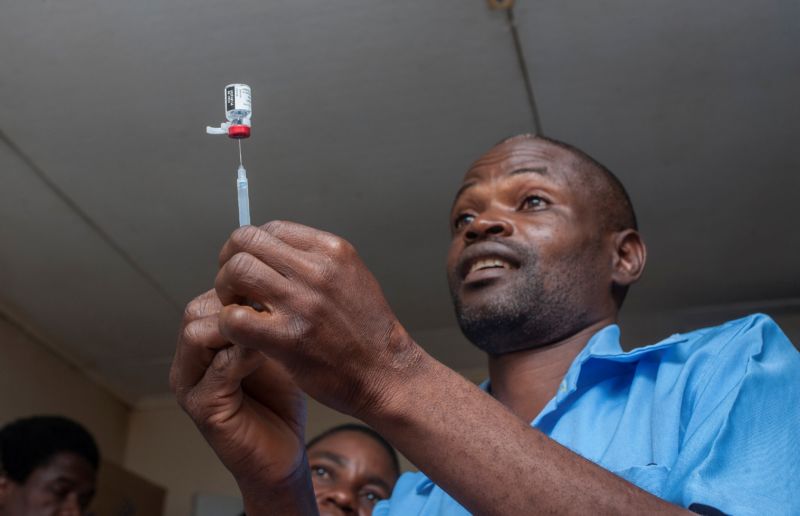
Sometimes, a vaccine is a slam dunk. Take the 97.5 percent-effective Ebola vaccine, for instance, or the 97 percent-effective measles vaccine. Other times, a vaccine is a dud, however, offering little to no protection and clearly destined for the dustbin.
Then there is a third group: the vaccines that fall in the middle. They might protect some, but far from all. The fate of these vaccines is less certain—an open question, in fact.
Such is the case of the world’s first malaria vaccine, which on Tuesday, April 23, was cautiously added to routine vaccinations in the African nation of Malawi as part of a pilot program. Ghana and Kenya will also introduce the vaccine in coming weeks.
The vaccine, known as RTS,S, is only about 39 percent effective at preventing malaria—and that’s only in children who receive four separate doses. It’s only 29 percent effective at preventing the most severe forms of the mosquito-borne disease.
Still, with more than 200 million malaria cases worldwide each year and 435,000 deaths, even modest efficacy could translate to tens of thousands of lives saved.
“This is a landmark moment,” Kate O’Brien told reporters during a press conference Tuesday. She’s the Director of the Department of Immunization, Vaccines and Biologicals at the World Health Organization. RTS,S is a “vaccine of firsts,” she added. It’s the first malaria vaccine to show such efficacy after decades of research and dozens of other candidates. It’s also the first to reach young, vulnerable children in a routine vaccination program.
RTS,S has been in the works for more than 30 years. It was created in 1987 at GlaxoSmithKline and works by containing a fragment of a protein from the malaria parasite Plasmodium falciparum. That fragment prompts the immune system to attack after a mosquito first delivers the parasite into the blood stream and before the parasite has the chance to infect the liver. That’s where it can mature, spawn, reemerge to infect red blood cells, and cause disease symptoms.
From 2009 to 2014, researchers tested RTS,S in a Phase III clinical trial across seven countries in Africa, where 250,000 children die from the parasitic infection each year. Data from nearly 15,500 infants and children in the trial indicated that the vaccine is only about 39 percent effective. Whether or not that efficacy rate will hold up in real-world settings remains to be seen.Still, with malaria’s steep death toll and no other vaccine candidates on the horizon, public health experts made the tricky call to recommend rolling out RTS,S beyond the trials—but they’re doing so cautiously. Researchers will carefully follow the pilot vaccination programs in the three countries, where they will track efficacy, safety, and how well parents do at bringing their children in for all four vaccine doses. The results will steer policy decisions on whether the vaccine should be used elsewhere in the future.
“We believe that this may be yet another tool—an imperfect tool with a modest efficacy—just like all of our other malaria control tools—but which, when used imperfectly, may actually have massive impact,” Pedro Alonso, Director of WHO’s Global Malaria Program said. The other tools used against malaria include insecticide sprayed indoors, bed nets, and improvements in malaria testing and treatments.
“We’re dealing with a very, very hard organism,” Dr. Alonso added, speaking of the P. falciparum parasites that cause the disease. These are “really complex organisms,” he said, and we don’t know how long it will take researchers to come up with a better vaccine.
The pilot programs aim to reach around 360,000 children a year across the three countries. It is set to last for five years, at which point public health experts will assess the future of RTS,S.
https://arstechnica.com/science/2019/04/malaria-vaccine-rollout-is-a-gamble-an-imperfect-tool-used-imperfectly/
2019-04-25 10:45:00Z
52780276157389
Bagikan Berita Ini














0 Response to "Malaria vaccine rollout is a gamble: An “imperfect” tool “used imperfectly” - Ars Technica"
Post a Comment